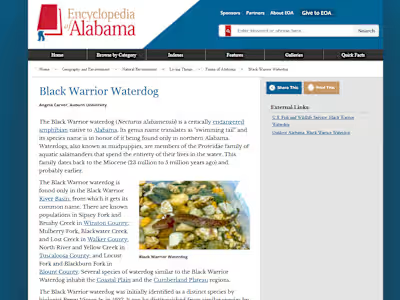Cryogenic Treatment for Aerospace Engineering

A review from the client who ordered this blog post
Cryogenic Treatment for Aerospace Engineering
The term "cryogenic" comes up frequently in regard to aerospace applications. Aside from the science-fiction cryogenic preservation of human bodies, there are real applications for cryogenic technology within the aerospace industry. These include using cryogenic fluids to cool engines and other components, storage of rocket propellant at cryogenic temperatures, and cryogenic gas sampling equipment. Additionally, spacecraft encounter cryogenic temperatures during their forays into space.
On top of all these uses, cryogenic hardening technology is used by materials engineers to prepare metals for the rigor of flight or space travel.
What is Aerospace fabrication?
Aerospace fabrication refers to the construction of vehicles for flight both within and beyond Earth’s atmosphere. These vehicles include anything from airplanes, spacecraft, missiles, and sailplanes, to hot air balloons and blimps. The aerospace industry also includes the manufacture of components for major flight subsystems and support systems as well as products borrowed from aerospace by other industries (Weiss and Amir 2020). Airplane and spacecraft systems are incredibly complex; therefore high-quality, specialized fabrication is of the utmost importance for the aerospace industry. Additionally, quality component design and fabrication helps to ensure the safety of planes and spacecraft.
Where does cryogenic hardening come in?
Cryogenic hardening is a process used to micro-smooth materials being treated by subjecting them to cryogenic temperature below -238 degrees Fahrenheit. This process gives additional strength, durability, and uniformness to metals which are treated (Sachin 2017). When steel components are manufactured, they sometimes contain residual amounts of the iron mineral austenite which weaken its structure and decrease its electrical properties (“Cryogenic Treatment” 2020). Austenite is a formation of iron and carbon atoms in which the carbon atoms are irregularly spaced around the iron atom. There are too few carbon atoms to support a regular molecular structure, contributing to austenite’s relative weakness (Darvell 2018). Cryogenic hardening effectively converts the austenite into martensite and “fills-in” the molecular structure with precipitated microscopic carbides (Sachin 2017). This process improves metal qualities such as hardness, electrical conductance, and susceptibility to corrosion.
The importance of cryogenics to aerospace parts and fabrication
For critical applications such as in the aerospace industry, it is imperative to have the highest quality materials. Cryogenic hardening is often used to strengthen components in communications systems, weapons systems, guidance systems, and landing gear. Aerospace equipment undergoes enormous stresses from the forces applied during take offs and landings; cryogenic hardening helps aerospace materials withstand these forces.
Steel containing high levels of austenite has increased ductility, making it easy to form into various parts and components. However, once the component has been formed, ductility is no longer an asset. This is a great case for the use of cryogenic hardening to convert the ductile austenite to the more structured, durable martensite.
Additionally, many unmanned space craft may experience cryogenic conditions during use in the cold of space. For example, lunar rovers experience the phenomenon known as lunar night. At any given location on the Moon, daylight (lunar day) lasts about two weeks followed by about two weeks of darkness known as lunar night. During the lunar night, temperatures drop into the cryogenic range, complicating the survival of the rover (Kim 2020). Using cryogenic hardening to prep critical components may help the rover survive these bitter cold conditions.
Primary suppliers of aerospace fabrication services
America’s largest aerospace companies such as Boeing, Lockheed Martin, Northrop Grumman, United Technologies, and Raytheon have become household names. However, there are also many aerospace component and equipment manufacturers which support these larger corporations. These smaller manufacturers are often highly specialized experts in one facet of aerospace fabrication. For example, Arconic produces lightweight metals and parts from fuselage panels to fasteners. Out of Connecticut, Amphenol is the leading supplier of interconnect products for aircraft engines. Senior Aerospace in Burbank, California manufactures engine parts, duct fittings, and nacelle attachment rings. Griffon Aerospace manufactures composite unmanned aircraft and supplies major aerospace companies with advanced designs. Aerospace Structural Research Corp. offers engineering consulting services for spacecraft and aircraft components from its headquarters in Milford, Connecticut (Top Aerospace Companies and Manufacturers in the USA).
Other big players in the aerospace consultation and fabrication space include Airmods LLC in Colorado Springs, Colorado, Woolf Aircraft Products out of Romulus, Michigan, Pentad Design in Tustin, California, Warehouse Equipment & Supply Company, Inc. from Birmingham, Alabama, ABB Inc.-Instrumentation & Analytical in Wickliffe, Ohio, Falcon Electric, Inc. from Irwindale, California, Global CNC Industries, Ltd. from Plymouth, Indiana, and Industrus Manufacturing & Consulting Inc. from Riverside, California (Top Aerospace Companies and Manufacturers in the USA). This cadre of experienced engineering and manufacturing firms helps the United States aerospace industry to run smoothly by providing their specialized fabrication expertise.
Multi-layer insulation in aerospace
Multi-layer insulation blankets are a type of soft product developed in aerospace manufacturing to protect space vehicles from excessive heat loss or gain due to the harsh conditions of space. The outside is covered in a thin reflective layer which fends off excessive heat from the sun, while spacer materials inside help to keep the vehicle warm enough (“Multilayer Insulation” 2020). These multi-layer insulation blankets use the same principles as a thermos to insulate the spacecraft; much like how a vacuum layer between the inner and outer shells of a thermos prevent heat transfer, space between the layers in the multi-layer insulation blankets prevent heat transfer from one layer to another. Typically, a single multi-layer insulation blanket has 40 layers (Savage 2011). The fiberglass fabric allows flexibility to wrap around a myriad of craft designs. Additionally, the fabric’s porosity permits trapped gas molecules to escape easily, improving the insulative properties of the material (“Thermal Insulation – A compilation”). These insulative blankets are especially important for the insulation of ducts and other appurtenances.
The materials from which these blankets are made must be extremely durable as they are subjected to the rigors of the environment in space. This includes intense heat from sunlight shining on the spacecraft and extreme cold when the sun is not shining on the spacecraft (“As Good As Gold: Are Satellites Covered in Gold Foil?” 2016). The materials must maintain their physical properties in a vacuum as well as have superlative durability (“Multilayer Insulation Blankets”). In addition to all of this, the materials need to be lightweight—every ounce counts when trying to launch a craft into orbit.
These blankets are used on everything from satellites, to spacecraft, to aircraft. They are used on the International Space Station which has multi-layer insulation in areas such as the airlock, the lab, nodes, and truss elements (“Multilayer Insulation").
Make sure your aerospace parts get the treatment they need
The aerospace industry is extremely complex. Aerospace components and products have to withstand strong forces, extreme heat, cryogenic cold, and the vacuum of space. Weakened or compromised materials are unable to withstand these excessively hostile environmental conditions. For the safety of space travel, air travel, and the longevity of satellites or other unmanned aerospace equipment, it is imperative to use the correct materials. When determining the suitability of various materials for use in aerospace applications, consider treatments such as cryogenic hardening to improve the durability and longevity of your equipment. Also consider shielding your equipment from the elements by using high-quality multi-layer insulation on ducts, seals, and other mission-critical appurtenances or structures. An experienced team of engineers in the aerospace fabrication industry can lead you through the process of selecting the correct treatments for all the materials on your craft.
References
“As Good As Gold: Are Satellites Covered in Gold Foil?” NOAA National Environmental Satellite, Data, and Information Service (NESDIS), National Oceanic and Atmospheric Administration, 29 Aug. 2016, www.nesdis.noaa.gov/content/good-gold-are-satellites-covered-gold-foil.
Bhadeshia, H. K. D. H. Geometry of Crystals, Polycrystals and Phase Transformations. CRC Press, 2018.
Bhadeshia, H. K. D. H. Martensite and Martensitic Phase Transformations, University of Cambridge, www.phase-trans.msm.cam.ac.uk/2002/martensite.html.
Bhadeshia, Harshad Kumar Dharamshi Hansraj. Bainite in Steels: Theory and Practice. Maney Publishing, 2015.
Cryogenic Treatment, Arrow Cryogenics, www.arrowcryogenics.com/cryogenic-services.
“Cryogenic Treatment.” Bhat Metals, 16 Apr. 2020, bhatmetals.com/cryogenic-treatment/.
Darvell, B. W. “Chapter 21 - Steel and Cermet.” Materials Science for Dentistry, 10th ed., Woodhead Publishing Series in Biomaterials, 2018, pp. 540–554.
Dunbar, Brian. “Very Cold Research for an In-Space Refueling Station.” NASA, NASA, www.nasa.gov/centers/glenn/about/testfacilities/cryo.html.
Kim, Taig Young. “Thermal Shelter for Survival of Rover during Cryogenic Lunar Night.” Acta Astronautica, vol. 171, 2020, pp. 151–155., doi:10.1016/j.actaastro.2020.02.048.
“Multilayer Insulation Blankets.” Chemfab.com, Saint-Gobain, www.chemfab.com/markets/aerospace/multilayer-insulation-blankets.
“Multilayer Insulation.” Aerospace Fabrication & Materials, 28 Apr. 2020, www.aerospacefab.com/product/mli/.
Sachin S S, "Cryogenic hardening and its effect on properties of an aerospace aluminium alloy", https://www.ijltet.org/journal_details.php?id=910&j_id=3634, Volume 8 Issue 1 - January 2017, 566-571, #ijlteorg
Savage, Chris J. “Chapter 11 Thermal Control of Spacecraft.” Spacecraft Systems Engineering, by Peter W. Fortescue, Wiley, 2011.
Top Aerospace Companies and Manufacturers in the USA, Thomas, www.thomasnet.com/articles/top-suppliers/aerospace-companies-manufacturers/.
“Thermal and Mechanical Treatments for Nickel and Some Nickel-Base Alloys: Effects on Mechanical Properties.” NASA Technical Reports Server, NASA, ntrs.nasa.gov/citations/19720021912
“Thermal Insulation - A Compilation.” NASA, NASA, ntrs.nasa.gov/citations/19710021375.
Weiss, Stanley I., and Amir R. Amir. “Manufacturing.” Encyclopædia Britannica, Encyclopædia Britannica, Inc., 23 Mar. 2020, www.britannica.com/technology/aerospace-industry/Manufacturing.
Like this project
Posted Apr 24, 2021
Likes
0
Views
117






